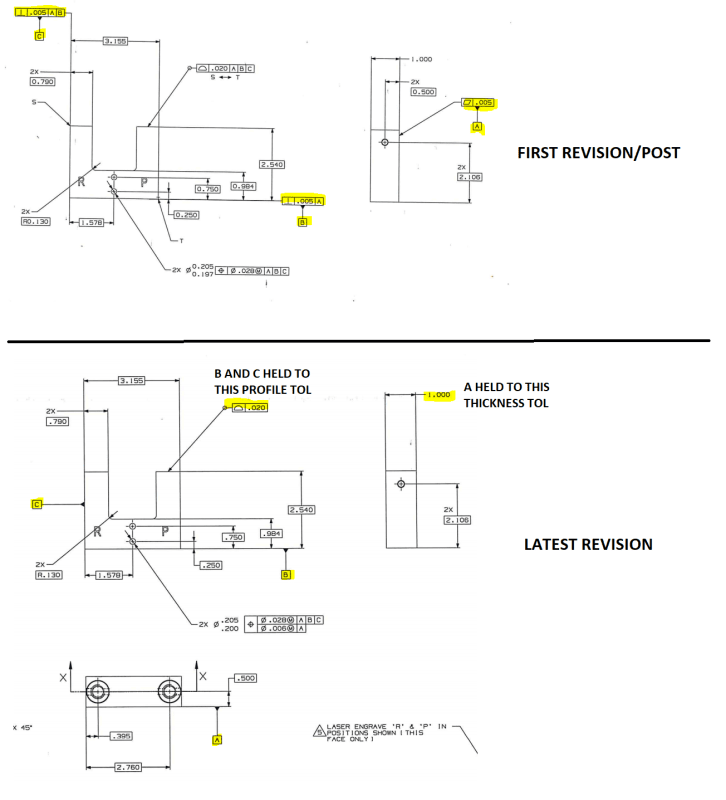Hi all,
I am a novice with regards to the proper application of GD & T.
I have attached a drawing of a simple part I have added it to- where previouly it was dimensioned without it.
Can you give me some feedback with regards to the application of the symbols I have used.
I am working to ASME Y14.5 and in units are inches.
Thanks
I am a novice with regards to the proper application of GD & T.
I have attached a drawing of a simple part I have added it to- where previouly it was dimensioned without it.
Can you give me some feedback with regards to the application of the symbols I have used.
I am working to ASME Y14.5 and in units are inches.
Thanks

